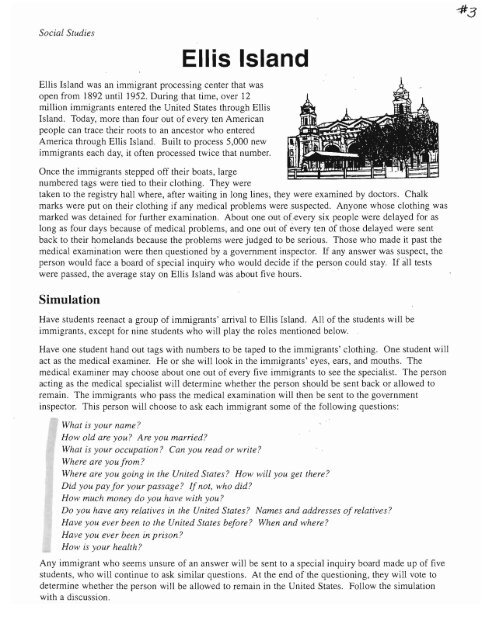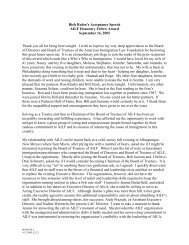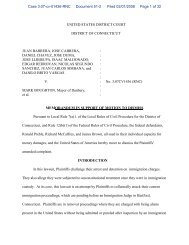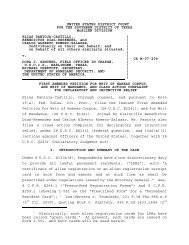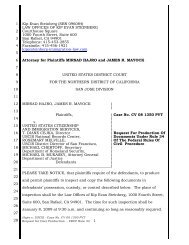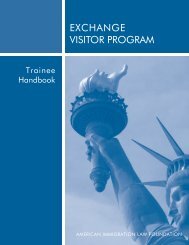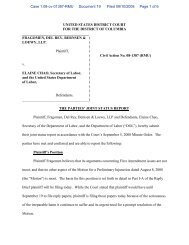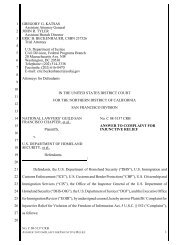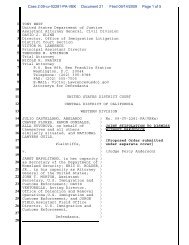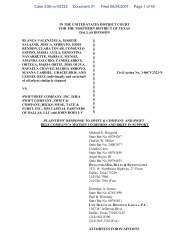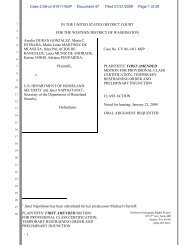MAKING IMMIGRATION COME ALIVE - American Immigration Council
MAKING IMMIGRATION COME ALIVE - American Immigration Council
MAKING IMMIGRATION COME ALIVE - American Immigration Council
- No tags were found...
You also want an ePaper? Increase the reach of your titles
YUMPU automatically turns print PDFs into web optimized ePapers that Google loves.
Social StudiesEllis IslandEllis Island was an immigrant processing center that wasopen from 1892 until 1952. During that time, over 12million immigrants entered the United States through EllisIsland. Today, more than four out of every ten <strong>American</strong>people can trace their roots to an ancestor who enteredAmerica through Ellis Island. Built to process 5,000 newimmigrants each day, it often processed twice that number.Once the immigrants stepped off their boats, largenumbered tags were tied to their clothing. They weretaken to the registry hall where, after waiting in long lines, they were examined by doctors. Chalkmarks were put on their clothing if any medical problems were suspected. Anyone whose clothing wasmarked was detained for further examination. About one out of,every six people were delayed for aslong as four days because of medical problems, and one out of every ten of those delayed were sentback to their homelands because the problems were judged to be serious. Those who made it past themedical examination were then questioned by a government inspector. If any answer was suspect, theperson would face a board of special inquiry who would decide if the person could stay. If all testswere passed, the average stay on Ellis Island was about five hours.SimulationHave students reenact a group of immigrants' arrival to Ellis Island. All of the students will beimmigrants, except for nine students who will play the roles mentioned below.Have one student hand out tags with numbers to be taped to the immigrants' clothing. One student willact as the medical examiner. He or she will look in the immigrants' eyes, ears, and mouths. Themedical examiner may choose about one out of every five immigrants to see the specialist. The personacting as the medical specialist will determine whether the person should be sent back or allowed toremain. The immigrants who pass the medical examination will then be sent to the governmentinspector. This person will choose to ask each immigrant some of the following questions:What is your name?How old are you? Are you married?What is your occupation? Can you read or write?Where are youfrom?Where are you going in the United States? How will you get there?Did you pay for your passage? If not, who did?How much money do you have with you?Do you have any relatives in the United States? Names and addresses of relatives?Have you ever been to the United States before? When and where?Have you ever been in prison?How is your health?Any immigrant who seems unsure of an answer will be sent to a special inquiry board made up of fivestudents, who will continue to ask similar questions. At the end ofthe questioning, they will vote todetermine whether the person will be allowed to remain in the United States. Follow the simulationwith a discussion.


